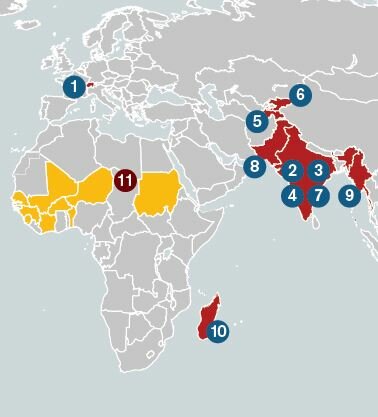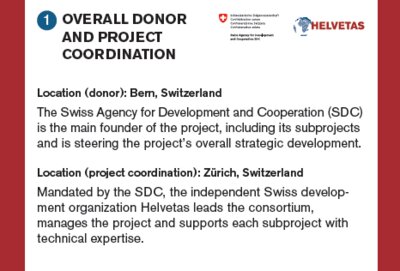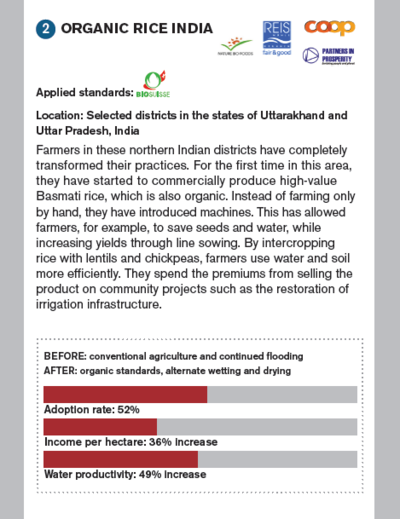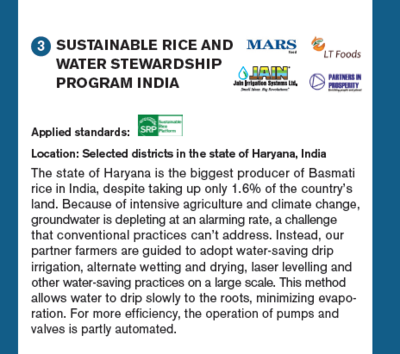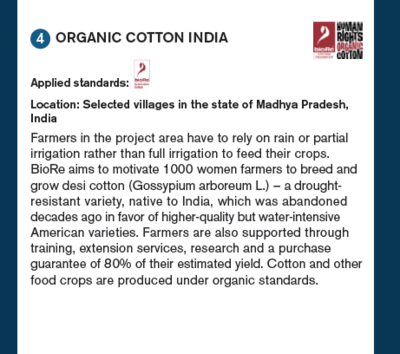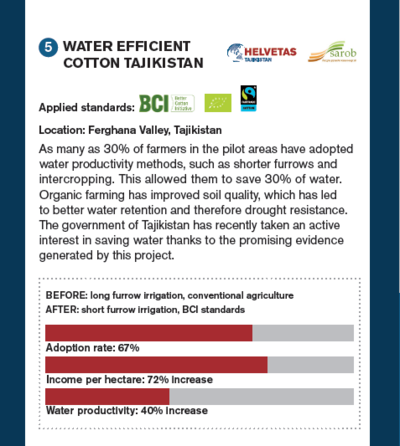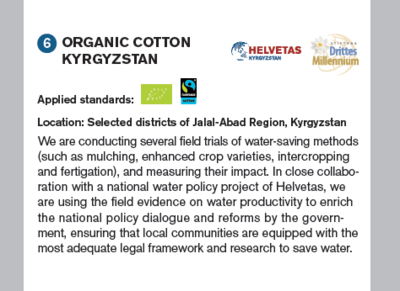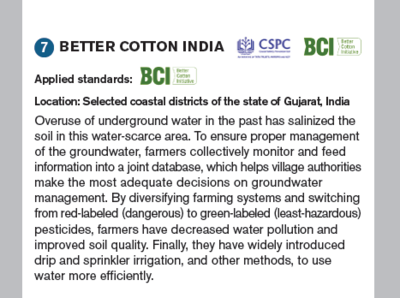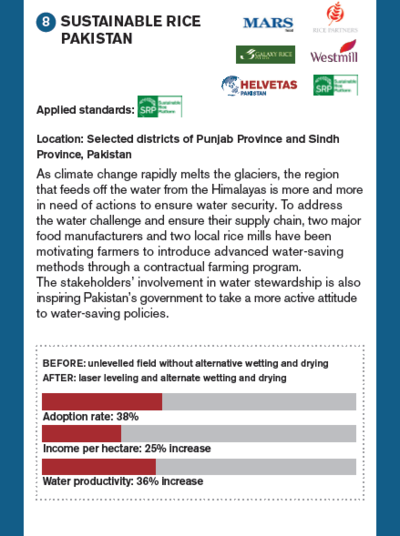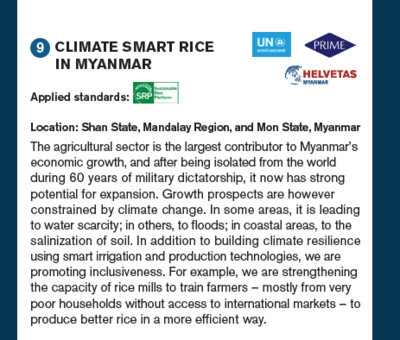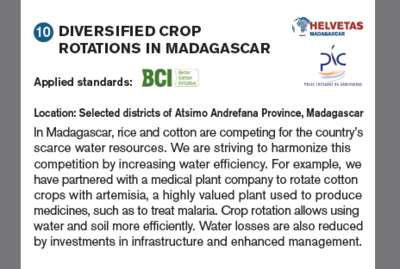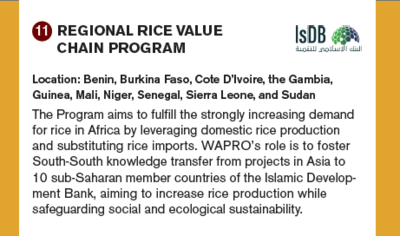Agriculture uses 70% of the world’s water. As the global population is increasing and the climate is changing, we are facing the growing threat of water and food shortages. WAPRO is a multi-stakeholder initiative to improve water efficiency in agriculture.
-
Project NameWAPRO – Multi-stakeholders join forces to enhance water productivity
-
Project Phase2015 to 2022
-
FundingThis project is an SDC mandate.
-
Thematic focusPrivate Sector Development
WASH & Water Governance
The WAPRO project was first implemented between 2015 and 2018 in four countries in Asia by a consortium of nine partners with a budget of about CHF 6.76 million, and involving 23,600 farmers.
By 2019, the project has grown to 16 countries of Asia and Africa, 22 partners, and a budget of about CHF 16 million, aspiring to improve the lives of 60,000 farmers.
Diverse stakeholders – from farmers and local NGOs to corporations and governments – take joint responsibility for the precious resource from which we all benefit.
WAPRO project offers a holistic push-pull-policy approach that encourages water stewardship – collective action towards the sustainable use of water.
PUSH
PROBLEM: Lack of Knowledge
Farmers are the main consumers of global water reserves. They are also among the poorest citizens of the world. Poverty prevents them from accessing water-saving knowledge and technology to supplement their know-how.
SOLUTION: Learning
Farmers master water saving methods. For example, by switching to shorter furrows, which allow for more even water distribution, farmers in Kyrgyzstan and Tajikistan save 30-40% of water.
We also promote diversified crops that use water and other resources more efficiently than monoculture crops. For example, lentils planted into a rice field are first irrigated by the same water that’s used as the last irrigation flow for rice.
We share the results with the national agriculture and water sector actors to encourage the replication of the technology that proved successful.
PULL
PROBLEM: Lack of Incentives
Even among farmers who are aware of water saving methods, only a fraction ends up adopting them. They are reluctant to make significant investments of time and money for an environmental benefit only.
SOLUTION: Financial Benefits
By promoting methods that not only save water but also increase production, we ensure that farmers have a financial incentive to save water. For example, the system of rice intensification allowed an increase in crop productivity in our project in India of 70% compared to traditional methods.
Private-sector actors create additional incentive mechanisms for farmers either by offering premium prices, prepayment of the crop, access to microcredits, secure access to enhanced markets or integration into agricultural extension programs (for example, showing how to save money by using fewer pesticides).
POLICY
PROBLEM: Lack of Governance
There are problems – such as water distribution and maintenance of irrigation infrastructure – that go beyond the reach of an individual farmer or company and require joint large-scale solutions.
SOLUTION: Policy Dialogue Based on Evidence
Rather than waiting for top-down policy changes, farmers and other villagers jointly
agree on a reasonable way to share water resources and create plans to improve the
local water situation.
Farmers work with the local authorities to adapt the regulatory frameworks, for
example regarding water distribution rights or water payment schemes. These changes on the local level help advance national agriculture, commodity and irrigation reforms.
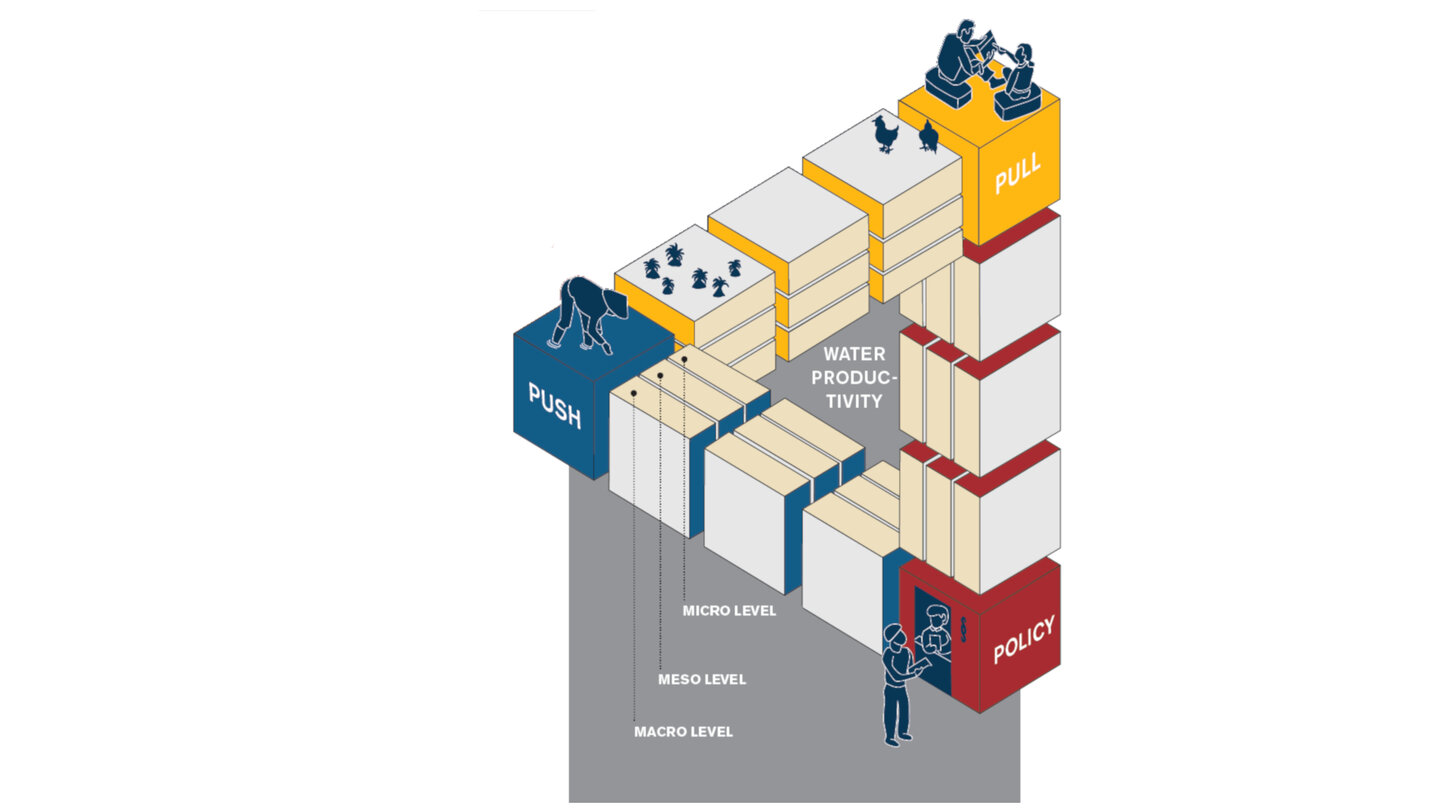
Frequently asked questions
How can I use the project insights in my work?
Contact us to learn more about ‘push’, ‘pull’ and ‘policy’ or to replicate our approach. We would be happy to share and support you in your water productivity journey!
What is water productivity?
It is the ratio between the amount or value of a crop and the amount of water applied for its production. Increasing water productivity means
a) decreasing the amount of water for production while maintaining or increasing the level of yield/income from the crop, or
b) increasing yields/value of a crop, while maintaining or decreasing the amount of water.
Why does the project focus on rice and cotton?
Globally, cotton and rice together account for more than 30% of irrigation water consumption and are mainly produced in countries with water scarcity. Not only is rice the world’s most important staple food, both crops have a major impact on food security because they directly compete with food crops for water and other resources. That is also one of the main reasons why the project emphasizes the need for the diversifying agricultural systems.
What water saving methods does the project promote?
- Diversifying the agricultural system includes crop rotation and intercropping. For example, intercropping a rice crop with soya increases the water productivity and at the same time offers higher income as farmers profit not only from selling rice but also soya.
- Drip irrigation allows farmers to increase water productivity even in highly water-scarce areas, delivering water to the roots at a slow pace.
- Shortening the furrows from over 100 meters to around 30 meters can increase water productivity by over 30%.
- The system of rice intensification (SRI) involves a combination of measures, such as earlier transplantation of seedlings, alternate wetting and drying and spacing plants wider apart.
- Direct seeding of rice and alternate wetting and drying (AWD) is a promising alternative to the transplanting of rice seedlings and continuous flooding of fields. AWD requires the installation of a simple tube in the soil to control water levels in unflooded periods.
- Laser leveling increases water productivity thanks to the equal distribution of water on the fields. The repeated leveling of fields is required only every 3–5 years.
- Refraining from or reducing the use of synthetic pesticides and fertilizers is an effective means of decreasing water pollution.
What is the role of standards in the project?
Sustainable Rice Platform (SRP), Alliance for Water Stewardship (AWS) and Better Cotton Initiative (BCI) are project steering partners. They provide guidance to farmers on sustainable production and water stewardship. On the other hand, WAPRO’s experience and evidence help the standard revision processes. For example, the project plays an important role in rolling out the new Water Stewardship Principle of the BCI standards globally, and its experience in implementing water stewardship at the farmer level is fed into the technical committee of AWS.
Further information
Publications
-
WAPRO at a GlancePDF (2.27 MB)
-
Gender Study in Rice value chain in PakistanPDF (1.52 MB)
-
Gender Study in Rice value chain in MyanmarPDF (2.01 MB)
-
Organic Cotton Improves Livelihood: A case study from KyrgyzstanPDF (0.53 MB)
-
How to Go Organic - Organic Cotton Sourcing GuidePDF (1.9 MB)
-
Drivers of irrigation inefficienciesPDF (2.75 MB)
-
Cost Return Analysis of rice crop with improved practicesPDF (0.55 MB)
-
Scientific Article summarizing selected results from the WAPRO sub-project in Haryana India:PDF (0.29 MB)
-
Scientific Article summarizing selected results from the WAPRO sub-project in Punjab, Pakistan:PDF (0.15 MB)
-
Scientific Publication from the National WAPRO Coordinator IndiaPDF (0.5 MB)
-
Public version of the external evaluation of the WAPRO projectPDF (1.59 MB)
-
Water Stewardship in Small-Scale AgriculturePDF (0.76 MB)
-
Water Saving Technologies in Rice and Cotton ProductionPDF (0.85 MB)
-
Learning for people and planetPDF (0.96 MB)
-
Collaboration With Private Partners: 10 InsightsPDF (0.61 MB)
-
Participatory Advocacy for Better IrrigationPDF (0.76 MB)
Further Links
- Water saving technologies in rice and cotton production
- Enhancing water productivity by using a push-pull-policy approach
- On the way towards water stewardship – experience from Pakistan
- Food system transformation needs private sector support
- Organic and Fair Trade Rice Project in India and Thailand
- More rice with less water
- Gender Role in Rice Value Chain Pakistan



